Femia > Health Library > Your cycle > Health > Pink discharge: Causes and what you can do about it
Pink discharge: Causes and what you can do about it
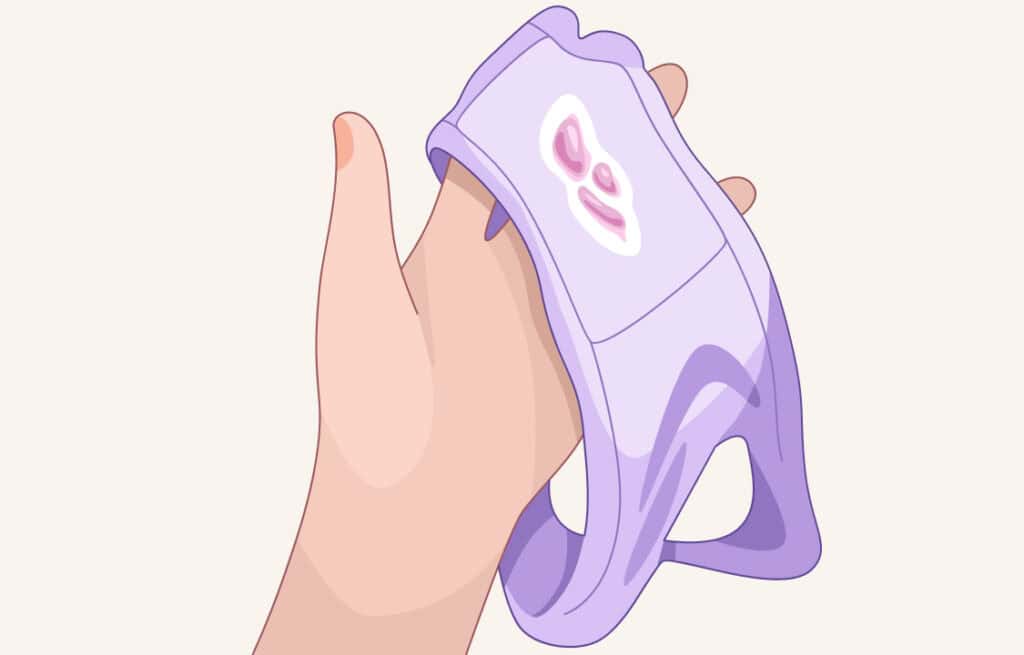
- Updated Feb 27, 2025
- Published
CRAFTED BY HUMAN
Crafted by human At Femia, we provide accurate and up-to-date information at every stage of your journey, from trying to conceive, pregnancy and postnatal support. All content is created by a real person based on in-depth research and own professional experience. Femia ensures that you will receive expert advice, strict accuracy and a personalized approach from our authors/medical experts. Learn more about our editorial policy.
FACT CHECKED
Fact checked At Femia Health, we maintain the highest standards of editorial excellence in delivering content focused on helping you conceive, guiding you through pregnancy, and supporting you postpartum. Explore our content review principles to learn how we ensure the accuracy and quality of our health and lifestyle tips for every stage of your journey.
Pink discharge, in most cases, indicates either the start or end of your period. While pinkish discharge is usually harmless, you might want to check in with your healthcare provider if it presents with some additional symptoms.
Pink or light pink discharge is a sign your period is around the corner. Pinkish discharge can also be seen on the last few days of your period. The pink hue of your discharge is the presence of a few drops of blood mixed with vaginal secretions. While this is completely normal, and harmless, having pink discharge might require a check-in with your doctor in some situations.
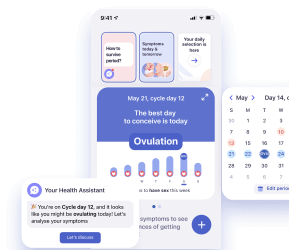
What is pink discharge?
Having pink vaginal discharge is extremely common and normal. Discharge fluid is produced by glands within your vagina and cervix along with some dead cells. Your pink discharge is mainly made up of fluid and mucus mixed with a few drops of fresh blood.
Since, the blood mixed with the discharge can come from anywhere, such as your uterus, cervix, vagina, or vulva, some situations of pinkish discharge might require medical attention. You can assess your normal discharge by noticing the regular patterns of your discharge, especially the color and consistency changes that happen throughout your menstrual cycle.
Sometimes, you may see pinkish-brown discharge. This is also normal and just means that the blood in the discharge is old, causing it to mix with the air, which oxidizes it to a brownish color.
Another factor to assess is how long your pink discharge lasts during every cycle. Normally, you will notice pinkish discharge for a day or two at the beginning and end of your period. However, if it lasts longer, is present at different times of your cycle, or is associated with other symptoms, it might provide clues to some other cause.
What are some common causes of pink discharge?
Pink discharge, while common, is not always associated with your period. This section will highlight both normal and abnormal causes of pink discharge.
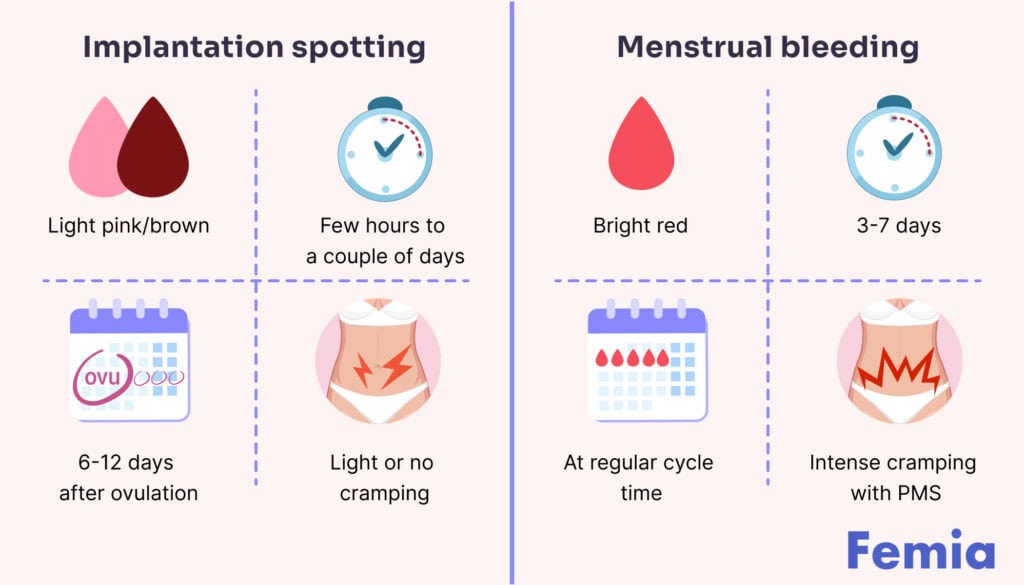
Your period is due
The most common cause of pinkish discharge is your monthly period. You may notice it as light pink blood when you wipe or pink spotting on your underwear. Spotting is the most common transition into menstruation. This has been highlighted in a study of 165 women, where 42% recorded a minimum of one day of spotting before their period started.
Sometimes, it is possible to notice pink discharge or light red periods throughout the length of your period. Hypomenorrhea, characterized by scanty periods, can present as multiple days of light periods for the normal duration of your periods. Your period will come at its normal interval every month, but the characteristic red blood will not be seen. Use of birth control pills, IUDs, and menopause can cause hypomenorrhea. If you wish to conceive, having regular hypomenorrhea may warrant a check-in with your doctor. This is to assess your hormonal levels which could affect your chances of conception or account for any episodes of recent miscarriage that could be affecting your period flow.
In some instances, you may notice the frequency along with the flow of your period changing. With oligomenorrhea, the interval between your periods is extended beyond the normal 28 – 35 day menstrual cycles. When your period finally comes, pink discharge may be noted for a longer duration.
13.5% of women experience oligomenorrhea. Stress, changes in lifestyle, excessive physical activity, or underlying hormonal conditions are possible causes of oligomenorrhea.
You are ovulating
Approximately 5% of women have bleeding during ovulation. A spot or two of blood might be noticed staining your underwear in the middle of your cycle. Ovulation bleeding results from the sharp rise and then fall of estrogen just before ovulation. This hormonal fluctuation causes momentary instability in your uterine lining, resulting in some uterine shedding that can cause a pinkish discharge.
Most women who experience ovulation bleeding may also notice light lower pelvic cramping. Bleeding, as well as cramping, might last for a few hours to a couple of days.
You are pregnant
Early pregnancy bleeding or spotting is recorded in 15-25% of pregnancies. It is reassuring to know in most of these cases, the pregnancies progress normally.
Spotting is frequently noticed in the first couple of weeks after ovulation, when your egg implants into the uterus. This pinkish discharge is often mistaken for a period, as it can last for a few days and is seen at the same time your period is scheduled to arrive.

You have just had a baby
Following delivery, vaginal bleeding (also known as lochia) can last up to eight weeks. For the first week, lochia will look like your period, bright red in color. After the first week, bleeding reduces, and pink or brown discharge takes over. This continues for a few weeks, fading to a yellowish discharge around week six.
You are experiencing hormonal fluctuations
Birth control pills, medical conditions such as PCOS, excessive exercise, stress, and changes in your diet are just a few of the factors that can affect the normal sync of your hormones. Some medicines are also known to cause pink spotting. Approximately 90% of women may notice abnormal uterine bleeding during perimenopause, which can include frequent pinkish-brown spotting between their periods.
In all these scenarios listed, the fine-tuning of your hormones is disturbed, resulting in either bleeding between your periods or changes in the pattern of your regular period. Both of these cases can result in pink discharge at any time during your menstrual cycle.
You have an underlying infection
Infection anywhere in and around your reproductive system can result in spotting or pink discharge.
A common cause of these infections is sexually transmitted diseases (STDs), which can lead to conditions that cause spotting. Chlamydia, gonorrhea, herpes, and human papillomavirus (HPV) are some STDs that can cause bleeding along with increased vaginal discharge. With STDs, pink discharge is often accompanied by lower pelvic pain, physical signs such as herpes vesicles or HPV warts, and pain or bleeding during sex.
A urinary tract infection (UTI) can also be a source of bleeding. This blood is more commonly noticed during a urine test, indicating that it is coming from the urinary passage and not your uterus or vagina. However, blood drops from a UTI can mix with your discharge as well, appearing as pinkish discharge.
With infections, it is crucial to identify other symptoms along with your pink discharge. This aids in receiving treatment earlier, limiting infection spread.
You were recently injured
Sex is the most frequent cause of injury-related bleeding from the vagina. Limited lubrication, penetrative sex with more force, inappropriate use of sex toys, or vaginal atrophy can cause minute tears within the vagina, resulting in bleeding right after sex or subsequent pink discharge. Some women may also notice light pink spotting from irritation caused during a routine pap smear or vaginal exam.
Bleeding associated with this type of injury often stops on its own. However, it’s best to discuss possible underlying causes with your doctor to be on the safe side, especially if you notice pinkish discharge frequently after sex or during an exam.
You have a gynecological condition
Recurrent spotting throughout your cycle might require a check for other medical conditions. Fibroids, ovarian cysts, and endometriosis can cause bleeding in between your periods. Signs can range from light pink discharge to red spotting between periods. Most of these health conditions are also associated with irregularities in your menstrual cycle and period flow.
In rare instances, cervical cancer has also been linked to bleeding, particularly after sex. This may appear as spotting immediately after sex or as pink discharge later when you wipe.
Is cramping normal with pink discharge?
Pink discharge is normally a sign of your period—a phase during the menstrual cycle where 45 – 95% of women experience some cramping. So, with pink discharge, light cramping is relatively common. Noticeable cramps are present on the first or second day of your period, during which most of your uterine lining comes out.
Ovulation cramping is also relatively common, noticed among 40% of menstruating women. Also known as Mittelschmerz (or middle pain), cramping is characteristically felt on one side of your lower pelvis, the side from which the egg for ovulation is released. Accompanying this crampy pain is a slight rise in body temperature, pinkish spotting, and nausea. Here, it is important to note that for most women, ovulation has no physical sign. But, for those who regularly track their cycles, these tell-tale signs can help assess the most fertile phase of your menstrual cycle.
Consistent or excessive cramping felt along with pink discharge is not normal and will require a check-in with your doctor.
When should I see a doctor?
You will be relieved to know that in most instances, noticing pink discharge is completely normal. After seeing pink discharge, you can expect your period in a few days. Keeping track of your discharge, its color, and accompanying symptoms can help identify any changes that mean you should visit a healthcare professional.
Bleeding after sex or any recurrences of pink discharge that are not linked to your period and present with other symptoms, such as unusual discharge, lower pelvic pain, burning sensation in or around your vagina, and period irregularities, warrant a comprehensive check-up with your doctor.
Questions from the Femia community
I have pink discharge every month. Is this normal?
Yes, it is absolutely normal to notice pink discharge every month. The most common reason for the pinkish discoloration of your discharge is your period. Pink discharge is noted at the beginning or end of your period. The change in discharge color is due to a few drops of blood mixing with your regular vaginal discharge. Ovulation and early pregnancy are other normal scenarios under which you may notice pink discharge.
What if I see light pink blood when I wipe, but I have no period?
If you notice light pink discharge and your period is not due for the next few weeks, it is best to check in with your doctor to find out what an underlying cause might be. Pinkish discharge can be caused by infections, internal injury, hormonal fluctuations, pregnancy, and gynecological health conditions such as uterine fibroids.
I have pink discharge. Does this mean I am pregnant?
It is possible to see blood-stained pink discharge at the start of your pregnancy. When the egg implants into your uterus at the beginning phases of pregnancy, you may notice a few drops of blood with your discharge. If you suspect you might be pregnant, it would be best to take a pregnancy test and check in with your doctor to confirm your pregnancy.
Can pinkish discharge be a sign of ovulation?
Yes, it can be a sign of ovulation. For some women, the fluctuations in estrogen just when you are about to release an egg during ovulation can cause instability in the uterine lining, resulting in ovulation bleeding. You may notice it as red spots or pinkish discharge. During ovulation, you may also experience one-sided pelvic cramps, increase in body temperature, and nausea. These signs may last for a few hours to a couple of days.
What if I see a light pink discharge when I wipe after my period?
Having pink discharge in the last few days of your period is completely normal. Pink mucus discharge is noticed when period blood is mixed in with other vaginal fluids. If your pink discharge doesn’t subside and you notice other out-of-the-norm symptoms as well, it would be advisable to check in with your doctor to rule out any other possible causes.
The bottom line
Seeing pink discharge is usually a normal sign that your period is around the corner. A few drops of period blood mixed with your normal vaginal secretions give your discharge its pink color. Pinkish discharge can also be seen on the last few days of your period, as well as during ovulation and the beginning stages of pregnancy. These are all normal biological processes in your body that can result in pink discharge.
However, under a few circumstances, such as hormonal fluctuations, infections, gynecological conditions, or (rarely) cervical cancer, pink discharge may be cause for concern. In these cases, it will be accompanied by other physical symptoms and will require you to check in with your doctor.
References
- Jacobson, Melanie H et al. “Hormonal Profiles of Menstrual Bleeding Patterns During the Luteal-Follicular Transition.” The Journal of Clinical Endocrinology and Metabolism vol. 105,5 (2020): e2024–e2031. https://doi.org/10.1210/clinem/dgaa099
- Riaz, Yumna, and Utsav Parekh. “Oligomenorrhea.” StatPearls – NCBI Bookshelf, 2023, www.ncbi.nlm.nih.gov/books/NBK560575.
- Dasharathy, Sonya S et al. “Menstrual bleeding patterns among regularly menstruating women.” American Journal of Epidemiology vol. 175,6 (2012): 536-45. doi: 10.1093/aje/kwr356
- “Bleeding During Pregnancy.” ACOG, 2021 www.acog.org/womens-health/faqs/bleeding-during-pregnancy
- Sweet, Mary Gayle, et al. “Evaluation and Management of Abnormal Uterine Bleeding in Premenopausal Women.” AAFP, 2012, www.aafp.org/pubs/afp/issues/2012/0101/p35.html
- Vitale, Salvatore Giovanni, et al. “Abnormal Uterine Bleeding in Perimenopausal Women: The Role of Hysteroscopy and Its Impact on Quality of Life and Sexuality.” Diagnostics (Basel, Switzerland) vol. 12,5 1176. 2022, doi: 10.3390/diagnostics12051176
- Wihlfahrt, Kristina, et al. “Sexually Transmitted Diseases-An Update and Overview of Current Research.” Diagnostics (Basel, Switzerland) vol. 13,9 1656. 2023, doi:10.3390/diagnostics13091656
- Jasper B, Thorley E, Martins FC, Haldar K. The incidence of cervical cancer in women with postcoital bleeding and abnormal appearance of the cervix referred through the 2-week wait pathway in the United Kingdom: A retrospective cohort study. J Obstet Gynaecol Res. ;48(11):2872-2878,2022. doi:10.1111/jog.15366
- Iacovides, Stella, et al. “What we know about primary dysmenorrhea today: a critical review.” Human Reproduction Update vol. 21,6: 762-78, 2015. doi:10.1093/humupd/dmv039
- Brott, Nathan R., and Jacqueline K. Le. “Mittelschmerz.” StatPearls – NCBI Bookshelf, 2023, www.ncbi.nlm.nih.gov/books/NBK549822
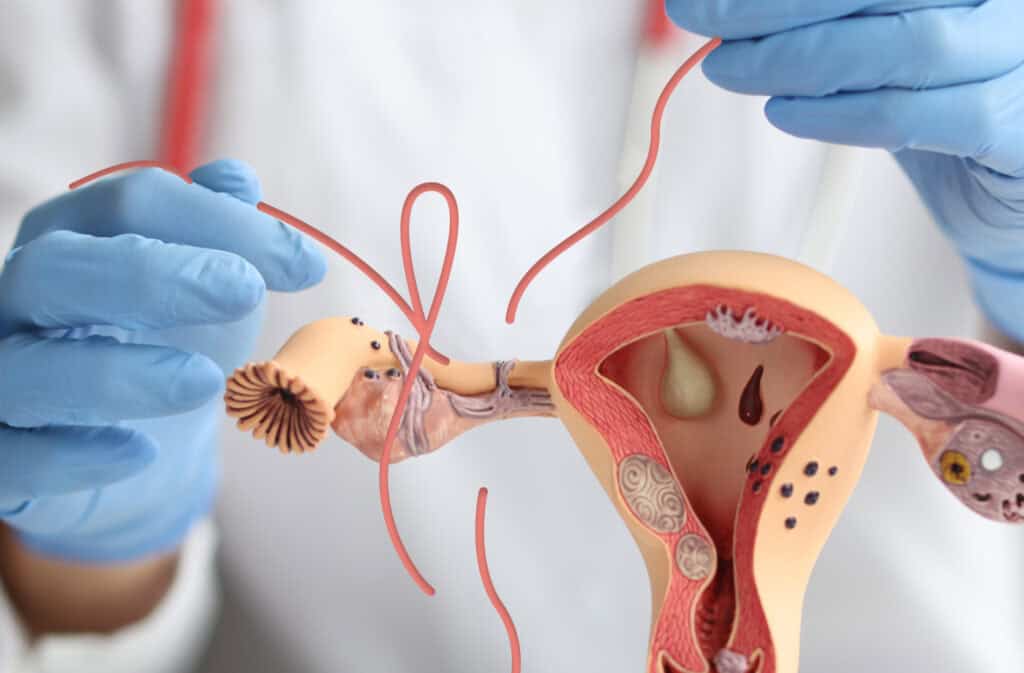
How soon after tubal reversal can I try to conceive? Discover the timeline, success rates, factors that affect conception after tubal reversal, and tips for conceiving.

Causes and symptoms of anovulation, a condition where you not ovulating but still have regular menstrual cycles. Discover options to address this common reproductive issue.
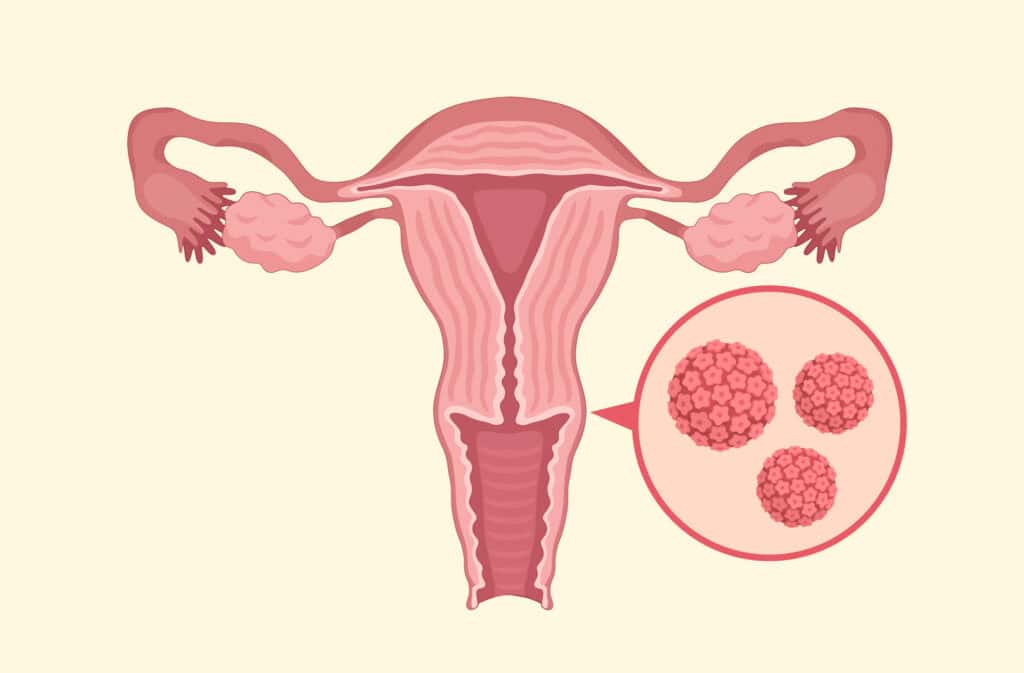
Can HPV cause infertility? Discover the impact of HPV on fertility and pregnancy outcomes in detail and the measures to prevent HPV from the mother to the baby.

